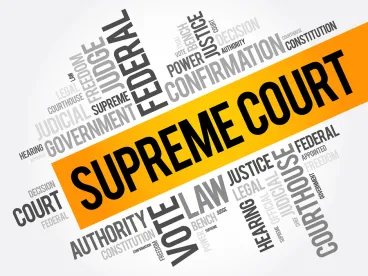In January, the Supreme Court granted a writ of certiorari in the case of South Dakota v. Wayfair (discussed here). Wayfair, which will be argued before the Court on April 17, is a direct challenge to Quill Corp. v. North Dakota, in which the Supreme Court held that a vendor does not have to collect and remit the sales/use tax owed on sales made to customers who reside in a given state unless the vendor has a physical presence in that state (we have discussed this issue here and here).
Since January, a number of persons have submitted amicus briefs in Wayfair including, notably, the Solicitor General. The Solicitor General’s brief makes a number of different arguments why an online vendor’s physical presence in a state should not be a precondition for the state to require the online vendor to collect and remit sales/use tax owed on sales the vendor makes to customers who reside in the state. One such argument is that the Court should limit prior precedent to mail-order retailers only (not online retailers), because the prior cases are “artifacts of their time” that could not possibly have foreseen the rise of online retail. To be sure, the impediments to requiring remote online retailers to collect and remit the sales/use tax that’s owed on sales made by these retailers into states in which these retailers lack a physical presence trace directly back to Quill, a case decided in 1992. For perspective, 1992 was the year that sophisticated moviegoers enjoyed the musings of Wayne and Garth and was a full two years before Bryant Gumbel explained the internet to us. In addition, Quill relied in large part on the Court’s ruling in National Bellas Hess, Inc. v. Department of Revenue, a Supreme Court case decided in 1967 when computers looked like this:

Elsewhere in the brief, the Solicitor General suggests overruling Quill and Bellas Hessentirely because they are “badly reasoned” and they bear “no logical relationship to current economic conditions . . . .” Alternatively, the Solicitor General suggests that the Court should apply a separate line of precedent altogether – one that focuses on balancing the benefits and burdens of foregoing sales/use tax revenue rather than using a bright-line physical presence standard to trigger a vendor’s obligation to collect and remit sales/use tax (the rule enunciated in Quill and Bellas Hess). In any event, in addition to reflecting the Solicitor General’s belief that states should be permitted to require online retailers to collect and remit the sales/use tax that’s owed on sales the online retailers makes to customers who reside in a given state, the brief reflects the Administration’s like-mindedness on this issue.
No one would disagree that the remote retail landscape has changed significantly over the last twenty-six years. These changes, among other matters, have led many commentators to conclude that the Supreme Court will use Wayfair to overrule Quill. The outcome of the Wayfair case, however, is far from certain. On the one hand, the amount of foregone sales tax revenue far exceeds anything that could have been imagined in 1992. Furthermore, technological advancements have made the collection and remittance of sales and use taxes far easier than in the past. On the other hand, in Quill, the Court made clear that the issue would be better resolved by Congress because Congress is best situated to evaluate to what extent states may burden interstate commerce by requiring remote retailers to collect and remit sales/use taxes. The Court has oftentimes interpreted the federal government’s failure to enact legislation to overrule the Court as an endorsement of the precedent established by the Court. The same could be true here.



 />i
/>i


